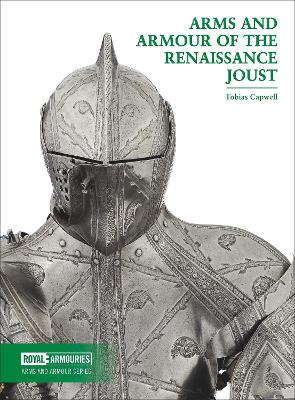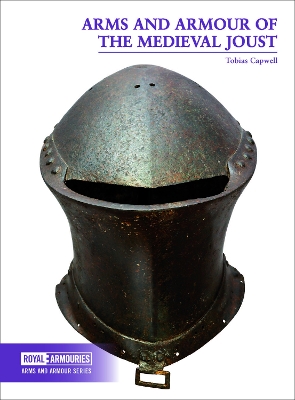Arms and Armour
2 total works
The Renaissance is best known as an age of artists - Michelangelo, da Vinci, Titian and Holbein - but it is also the age of the noble patrons who challenged their painters and sculptors to create great art. These patrons were knights, military leaders and jousters. They played a central role in the story of another great Renaissance story, that of the armourer.
Here, Tobias Capwell continues his history of jousting seen through surviving artefacts in the collection of the Royal Armouries. He reveals how the jousts and tournaments of the Renaissance transported knightly combat into a kind of performance art, with demonstrations of aristocratic skill and nerve, of superhuman strength and superlative horsemanship - and of cutting-edge equipment.
Here, Tobias Capwell continues his history of jousting seen through surviving artefacts in the collection of the Royal Armouries. He reveals how the jousts and tournaments of the Renaissance transported knightly combat into a kind of performance art, with demonstrations of aristocratic skill and nerve, of superhuman strength and superlative horsemanship - and of cutting-edge equipment.
Jousting is the most iconic form of mounted combat. For more than five hundred years, the sport itself, and the chivalric culture that surrounded it, took on almost mythical qualities. Here, Tobias Capwell explains the glitz and glamour of a sport that attracted enormous popular audiences throughout the late middle ages. Though he deals almost exclusively with weapons and warriors, Capwell tells a story not of war and destruction, but of pageantry and valour. This is the story of the armour of peace.
The book forms part of a series of introductions to aspects of the Royal Armouries' collection of arms and armour. Written by specialists in the field, they are packed full of fascinating information and stunning photography.
Royal Armouries is the national museum of arms and armour, with sites at Leeds, the Tower of London and Fort Nelson, Hampshire.
The book forms part of a series of introductions to aspects of the Royal Armouries' collection of arms and armour. Written by specialists in the field, they are packed full of fascinating information and stunning photography.
Royal Armouries is the national museum of arms and armour, with sites at Leeds, the Tower of London and Fort Nelson, Hampshire.

